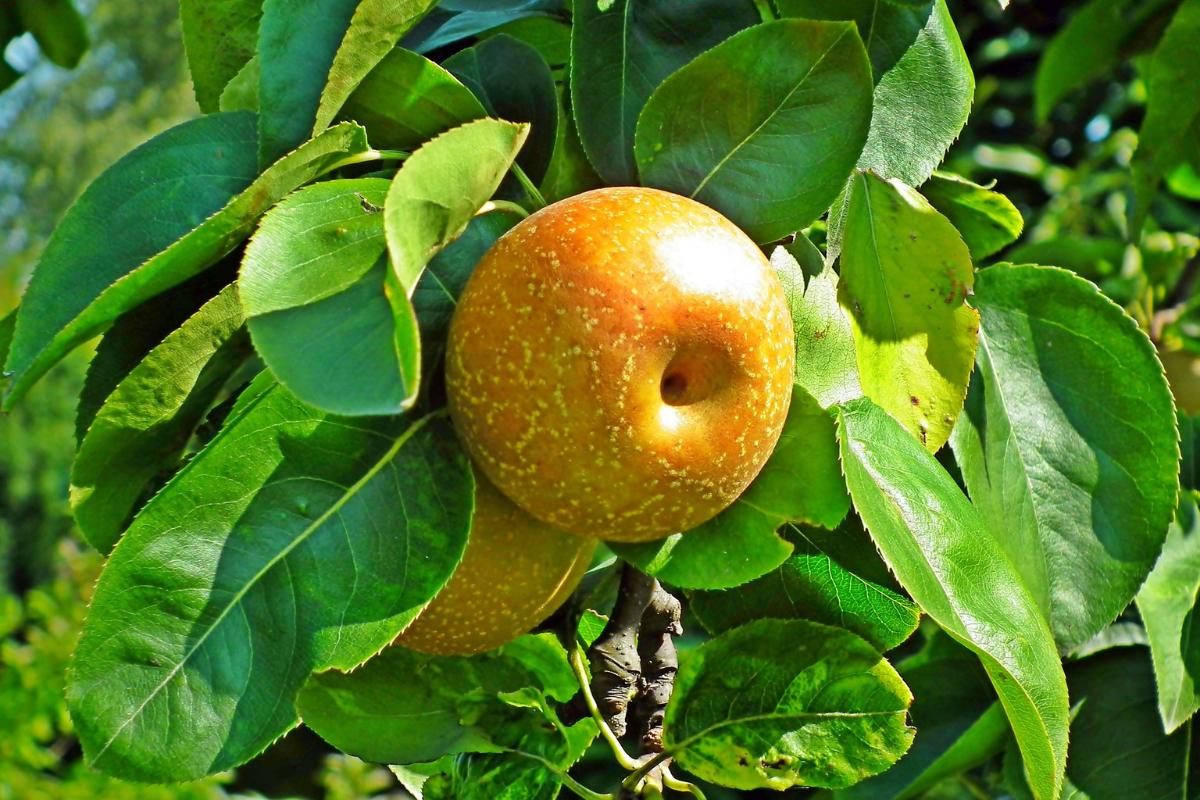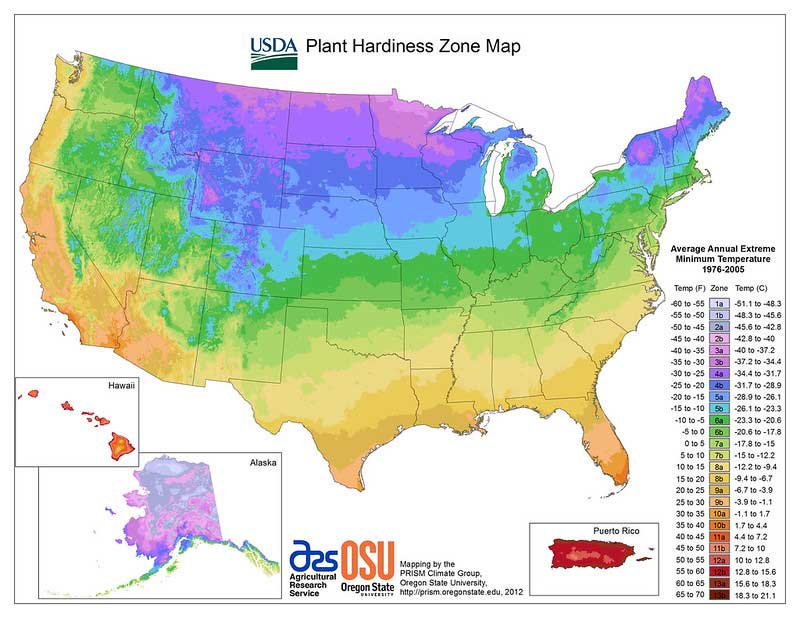Zone 9 has a mostly subtropical climate and fantastic place to grow fruit trees. This zone has warm weather for most of the year. With a little care and monitoring, you’ll find it easy to grow citrus and some tropical fruits that would not survive in northern regions. In this article we look at a list of fruit trees to grow in plant hardiness zone 9.
Before looking at the list, check out the USDA’s plant hardiness growing zones map. It will give you a visual representation of exactly where you are in the spectrum of growing zones.
12 Fruit Trees for Zone 9
Zone 9 includes the states of Florida, Georgia, South Carolina, Texas, Alabama, Louisiana, Mississippi, Utah, New Mexico, Arizona, Nevada, California, Oregon, Washington, and Hawaii. Here, winter temperatures rarely dip below 20-30F, so freezing risks are minimal. Plants here love temperatures as high as the 90s! Here are some examples of fruit trees that thrive in this zone.
1. Lemons
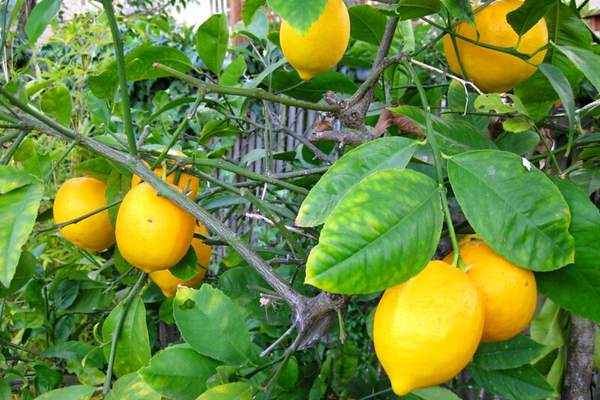
Scientific name: Citrus lemon
Lemons make great backyard plants in zone 9. This area of the United States is home to some of the largest lemon orchards in the world. They require full sun, well-drained soil, and an area to grow without harsh winds.
Outdoors, they’ll grow to about 20 feet tall. Indoors, they can be trained to heights of 3 or 4 feet. The Meyer lemon is a reliable variety to try in your backyard or porch.
If you’re impatient for a harvest, buy an immature tree, not a seed. You should be able to pick a lemon in three to six years.
2. Grapefruit
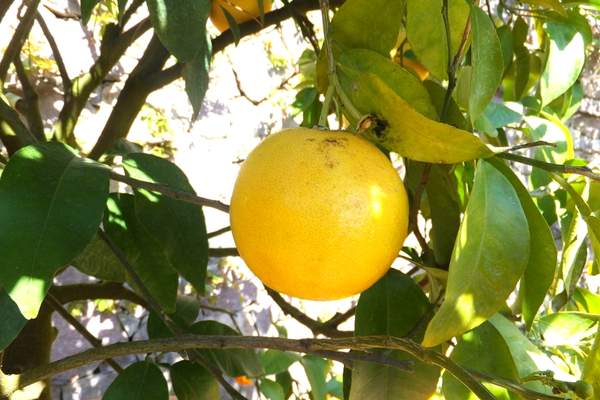
Scientific name: Citrus x paradisi
Grapefruit is another warm-weather type of citrus fruit. Originally bred by an accidental crossing of the pomelo and the sweet orange, farmers have refined and developed it into a fruit of its own. Grapefruit trees like full sun, rich, well-drained soil, and conditions between USDA growing zones 9 to 11.
They can be grown outdoors or in pots and containers. They take three years before they produce fruit and should be watered weekly.
3. Oranges
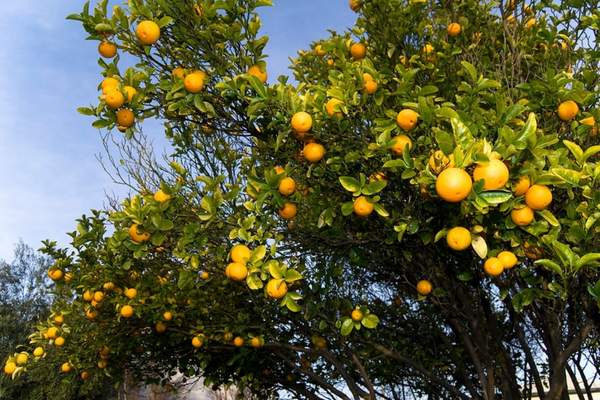
Scientific name: Citrus x sinensis
If you’re interested in growing fruit and you live in zone 9, the orange tree is a crowd favorite. These trees are petite, easy to care for, and produce bushels of fresh, juicy oranges. Don’t grow your tree from seed. Instead, buy a scion or grafted sapling with a hardy rootstock.
This ensures the best fruit output and lower disease risk. Water your orange tree in the spring and apply nitrogen or potassium fertilizer as needed.
Varieties accustomed to the hot, humid weather found in Florida and southern Texas are Navel and Valencia. They’re ripe and ready to pick in January!
4. Pomegranates
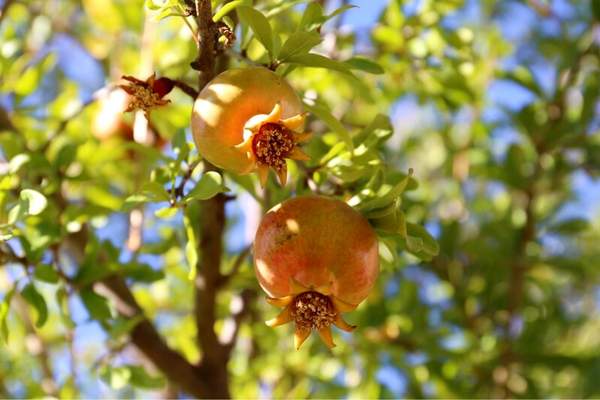
Scientific name: Punica granatum
Pomegranate pips are the perfect juicy pick-me-up at the end of a long, hot day. Ensure you’ll have a regular supply of these scarlet fruits by planting a pomegranate tree. The plant can be trained to a tree- or bush-habit.
Remember to remove suckers and thin out growth each year. The wonderful variety does well in hot environments.
If you’re concerned about cold-tolerance, try the Sumbar option. Plant them in full sun and expect them to fruit after about three or four years.
5. Tangelos
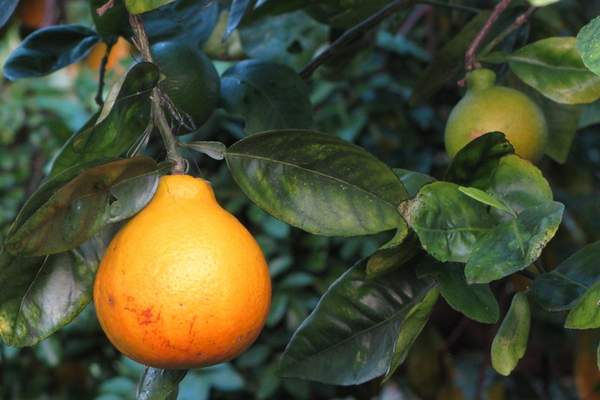
Scientific name: Citrus x tangelo
Tangelo trees are another miracle of modern horticulture. This cross between a tangerine and a grapefruit bears orange-sized fruit with peelable orange rinds. The trees themselves have cup-shaped leaves and grow very large.
They can be pruned to adorn doorways as well. The best tangelo variety is the Minneola; it can be used to pollinate oranges as well as other tangelo trees.
6. Avocados
Scientific name: Persea americana var. drymifolia Blake
There are three avocado species, but it’s best to grow the Mexican avocado in zone 9. This species can handle cold snaps as low as 20F, increasing their chance of survival over winter. In the wild, avocado trees grow between 40-80 feet tall.
Domestically they are pruned to about 20 feet. They bloom between January and March. Don’t plant from seed; buy a seedling from a nursery. Some Mexican avocado varieties include Holland and Wilma.
7. Kiwifruits
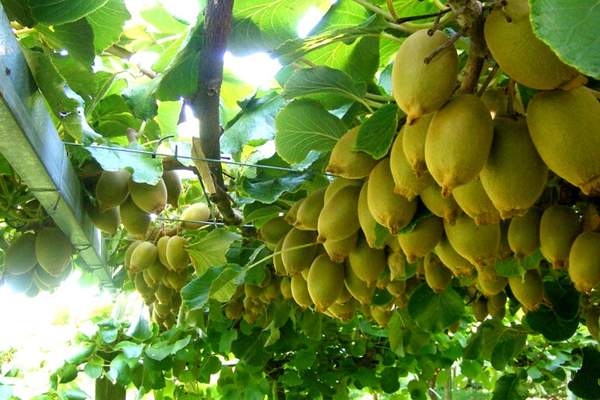
Scientific name: Actinidia deliciosa
Delicious kiwifruits grow in the warm climates of the USDA planting zone 9. Unlike other fruit trees on this list, the kiwi is technically a vine. It can be trained into a tree shape like other vines with the help of a trellis and stakes.
Develop a regular pruning practice that trains the branches and canes where to go during the winter months. Make sure you have both a male and female kiwi plant to cross-pollinate one another.
Mature kiwis issue white flowers and many fruits. They can live for over 50 years with proper care.
8. Passionfruit
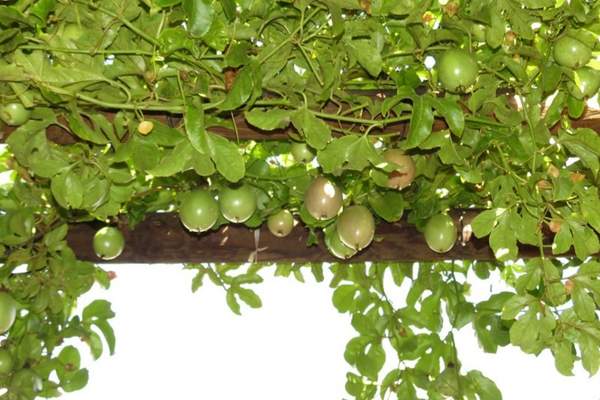
Scientific name: Passiflora edulis
If the zany, explosive flower of the Passionfruit didn’t grab your attention, its fruit will. Passionfruits mature on woody vines that wrap around trees and other structures for support. They can be trained similarly to grapes and kiwi to settle in a trellis or arbor.
You only need one since they are self-pollinating. Plant your passionfruit seedling outdoors near something it can climb.
It requires full sun, slightly acidic soil, and good drainage. If you have a green thumb, you may have luck propagating a passionfruit plant from a parent leaf.
9. Figs
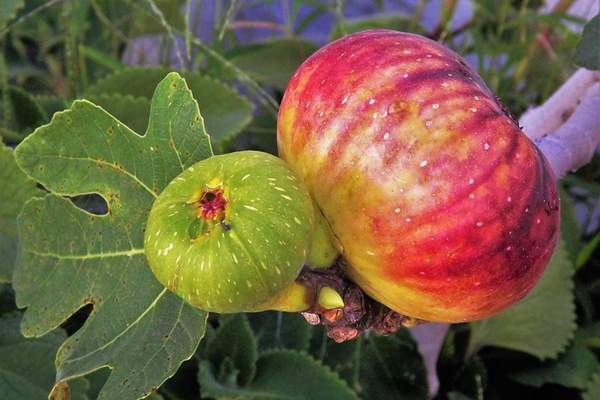
Scientific name: Ficus carica
Figs are a regular sight in the yards and gardens of zone 9. They are compact, smooth-barked fruit trees that grow between 20 and 30 feet tall. Prune them into an open vase shape if chilling is a concern; otherwise, they can have multiple trunks, a process called stooling.
Select a variety of the common fig in order to have the best growing results. Growers in arid regions will have more success with the Kadota variety, while those in zone 9 regions with hot, rainy summers prefer Texas Everbearing and Celeste options.
10. Peaches
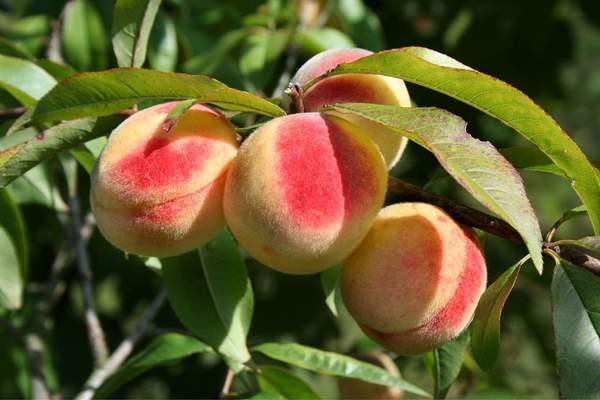
Scientific name: Prunus persica
Introduce a taste of the south to your orchard by planting peaches. These trees can be difficult to grow, but the rewards are bountiful and delicious. In zone 9, the largest risk for peaches is waterlogged soils.
The best kind of soil for peach trees is about two feet of sandy loam soil that measures between 6 and 7 pH. Try to plant them on a hill or elevated plot of land. Prune them in an open, vase-like shape so that the whole tree receives sunlight.
11. Pears
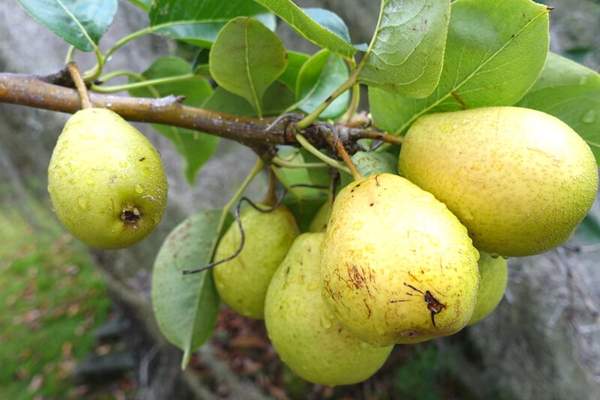
Scientific name: Pyrus pyrifolia
Asian pears are able to grow between the plant hardiness zones 5 to 9. These relatives of the European pear are apple-shaped, although they smell and taste like pears. Pear trees average about 15 to 20 feet tall and take a handful of years to grow before they fruit.
Plant at least two; they need to cross-pollinate. Some types of pears that thrive in zone 9’s long growing season are Reddy Robin, Korean Giant, and Mount Vernon.
12. Nectarines
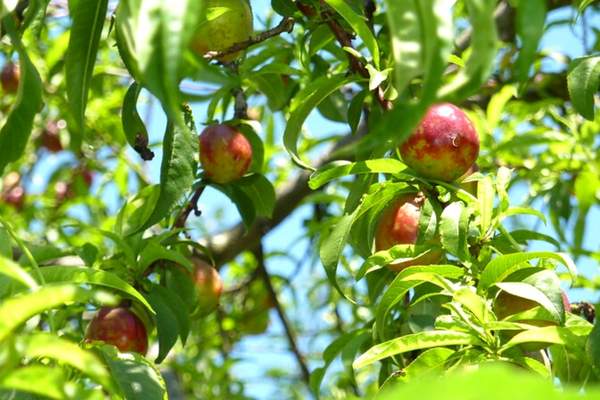
Scientific name: Prunus persica nectarina
Did you know that nectarines are subspecies of conventional peaches? They lack the gene for fuzzy skin. We recommend planting a nectarine tree if you’re looking for a peach without fuzz.
While they are smaller, they have a stronger fruity smell. Crimson Gold nectarines are a solid choice for zone 9 gardeners, especially those in warmer parts of the area. They require full sun, well-draining soil, and a sheltered area away from harsh winds.
